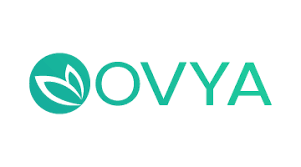
The Art of Domain Selection: Finding the Perfect 4-Letter Domains Available Tips Option
In the ever-evolving landscape of the digital world, having a solid grasp on domain management is crucial for businesses, entrepreneurs, and individuals alike. Whether you’re launching a new website or maintaining an existing one, effective domain management can significantly impact your online presence and success. Here are essential tips to help you master domain management.
1. Choose the Right Domain Name
Your domain name is your online identity. It’s often the first impression visitors have of your site. Selecting a domain name that is memorable, relevant, and easy to spell is vital. Here are some pointers:
- Keep it Short and Simple: Aim for a name that’s easy to type and remember. Long and complicated names can be easily mistyped or forgotten.
- Avoid Numbers and Hyphens: Numbers can be confusing and hyphens are often misunderstood, leading to potential loss of traffic.
- Use Keywords Wisely: Incorporate relevant keywords if possible, but avoid keyword stuffing. The domain should still be coherent and brand-friendly.
2. Register Multiple Extensions
To protect your brand, consider registering multiple domain extensions (.com, .net, .org, etc.). This helps prevent competitors from using a similar domain name and ensures that users can find your site regardless of the extension they use.
3. Secure Your Domain
Domain security is paramount. Unauthorized access to your domain can have devastating consequences. To safeguard your domain:
- Use Strong Passwords: Ensure that your domain registrar account has a strong, unique password.
- Enable Two-Factor Authentication (2FA): 2FA adds an additional layer of security, making it harder for unauthorized users to gain access.
- Lock Your Domain: Domain locking prevents unauthorized transfers of your domain name.
4. Keep Contact Information Up to Date
Accurate contact information is essential for domain management. Ensure that your WHOIS information is current to avoid losing your domain due to missed renewal notices. Additionally, consider using a WHOIS privacy service to protect your personal information from being publicly accessible.
5. Set Up Domain Forwarding
If you have multiple domains, set up domain forwarding to direct traffic from these secondary domains to your main site. This 4 letter domains available is particularly useful if users might misspell your domain name or use different extensions.
6. Renew Your Domain Promptly
Domain expiration can lead to a loss of business and brand reputation. Set up auto-renewal if possible and keep your payment information up to date to ensure your domain does not expire unexpectedly. It’s also wise to renew your domain for multiple years to avoid yearly renewals.
7. Monitor Domain Expiry and Ownership Changes
Regularly monitor your domain’s expiry date and any ownership changes. Tools and services are available to alert you to upcoming renewals and any changes in your domain’s status. This vigilance helps prevent accidental lapses and unauthorized transfers.
8. Utilize Subdomains
Subdomains can help organize your website and create specific areas for different types of content or user groups. For example, creating a blog (blog.yourdomain.com) or a customer portal (portal.yourdomain.com) can enhance user experience and site navigation.
9. Back Up Your Domain Data
Regularly back up your website’s data, including domain settings and configurations. In case of any issues or data loss, having a backup ensures that you can quickly restore your site without significant downtime.
10. Stay Informed
The domain landscape is constantly changing with new regulations, threats, and opportunities. Stay informed about the latest trends and best practices in domain management through industry blogs, newsletters, and forums.
By following these essential tips, you can ensure your domain remains secure, functional, and an effective part of your online presence. Remember, proactive domain management is key to maintaining a robust and successful digital footprint.

